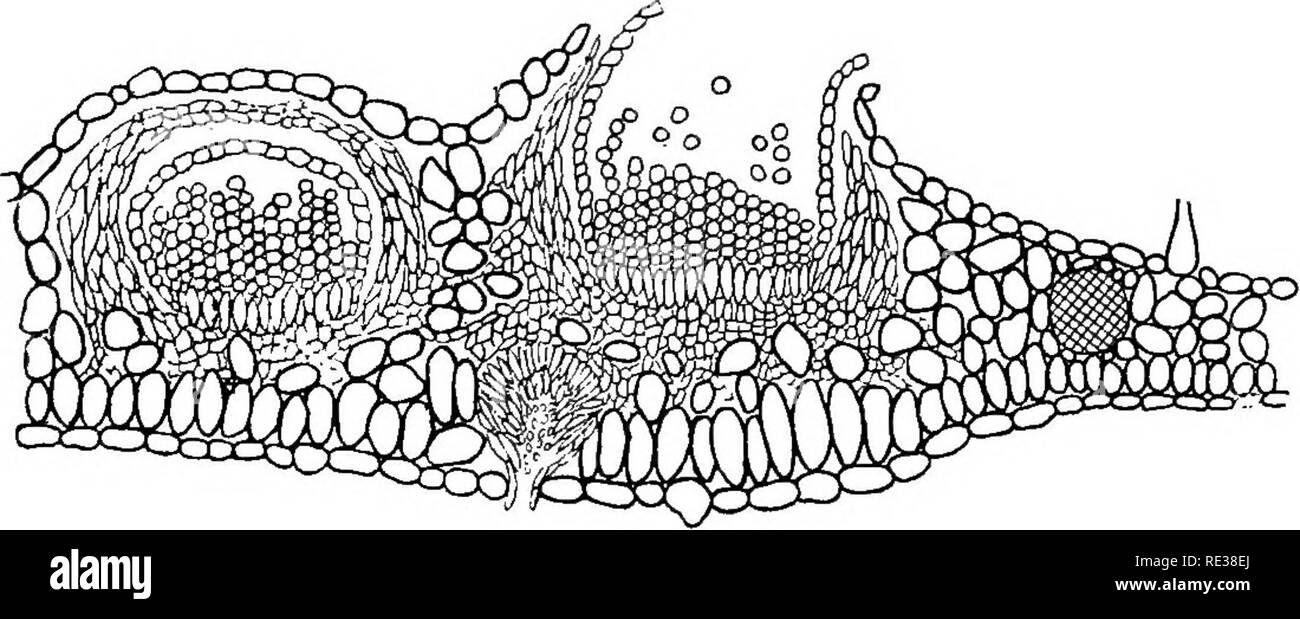. The British rust fungi (Uredinales) their biology and classification. Rust fungi. CHAPTEK I LIPE-HISTORF OF PUCCINIA CARIOIS, THE NETTLE AND SEDGE RUST Puccinia Garicis has two of its stages, the spermogonial and secidial, on the Nettle (Urtica dioica and other species), and two others, the uredo- and teleutospore-stages, on various species of Curex, especially C. paludesa. The first appearance on the nettle is in the spring, about the end of April or the beginning of May, when small swollen yellowish spots can be seen on the upper surface of the nettle-leaves. These spots are round and conv

Image details
Contributor:
The Book Worm / Alamy Stock PhotoImage ID:
RE38EJFile size:
7.2 MB (403 KB Compressed download)Releases:
Model - no | Property - noDo I need a release?Dimensions:
2477 x 1009 px | 41.9 x 17.1 cm | 16.5 x 6.7 inches | 150dpiMore information:
This image is a public domain image, which means either that copyright has expired in the image or the copyright holder has waived their copyright. Alamy charges you a fee for access to the high resolution copy of the image.
This image could have imperfections as it’s either historical or reportage.
. The British rust fungi (Uredinales) their biology and classification. Rust fungi. CHAPTEK I LIPE-HISTORF OF PUCCINIA CARIOIS, THE NETTLE AND SEDGE RUST Puccinia Garicis has two of its stages, the spermogonial and secidial, on the Nettle (Urtica dioica and other species), and two others, the uredo- and teleutospore-stages, on various species of Curex, especially C. paludesa. The first appearance on the nettle is in the spring, about the end of April or the beginning of May, when small swollen yellowish spots can be seen on the upper surface of the nettle-leaves. These spots are round and convex above, sunken beneath, and about 3—4 mm. in diameter; soon they turn orange on the upper surface, owing to the development thereon of the spermogones, small flagon-shaped bodies walled in by a large number of slender orange hyphsB and filled with many hundreds of minute spore-like cells, the spermatia, which are orange in mass, though singly they appear colourless (Fig. 1).. Fig. 1. P. Garicis. Section of leaf of Nettle, showing the hypertrophy produced by the mycelium of the secidium-stage; a spermogone, on the upper side of the leaf, and two secidia, one closed, on the under side. The upper face of the leaf is turned downwards, x 60. G. U. 1. Please note that these images are extracted from scanned page images that may have been digitally enhanced for readability - coloration and appearance of these illustrations may not perfectly resemble the original work.. Grove, W. B. (William Bywater), 1848-1938. Cambridge, University Press